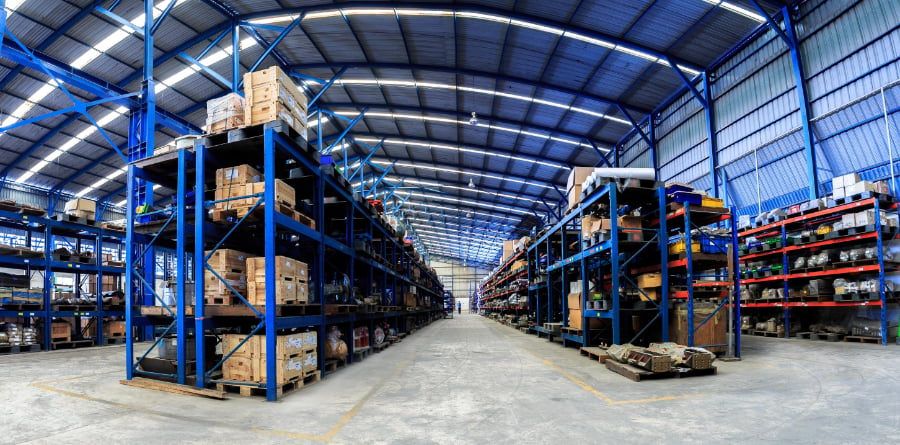
Whether you're leasing your very first warehouse, expanding warehousing into a new geographic area or moving into a larger facility, there are many things to consider as you compare potential buildings. Following these tips will help to ensure that you select a warehouse that is in line with your business needs.
1. Think in Terms of Cubic and Square Footage
Square footage is calculated based on the length and width of the available space and tells you how large a building is. Cubic footage adds ceiling height into the calculations and can give you a feel for how much room you have to stack items vertically. As you compare warehouses, you'll need to think about both figures to identify warehouses that have enough room for your merchandise, equipment and employees.
2. Consider What Your Goods Need
Not all warehouses are ideal for all types of goods. If you're storing items that are highly sensitive to temperature, humidity or dust, you will need to look for warehouses that provide precise climate controls. Highly flammable items will require sophisticated fire suppression systems for safety.
3. Know Your Equipment Instead and Out
Before you begin to look for warehouse space, take an inventory of the equipment you'll be using to move goods. Find out what the dimensions of the items are, how much they weigh and, if anything is electrical, what its required voltage is. Having this information on hand will help to ensure that you select a warehouse with compatible wiring and large enough doorways to accommodate your equipment. In addition, you'll want to double check that the total weight of your equipment and goods does not exceed the floor load capacity.
4. Don't Forget About the Outside
Consider the outside of the warehouse from the perspective of your employees and truck drivers. Is there enough space for cars and trucks to park? Is the parking lot in good condition and well lit? Is there enough clearance around the loading dock for trucks to maneuver with ease?
5. Be Aware of All Operating Costs
Before you sign a lease for a warehouse, make sure that you have a clear picture of all of the operating costs for occupying the space. Find out whether utilities and maintenance are included in the lease or if you will need to pay these expenses separately.
6. Check Out the Area
Do some research about the surrounding area before moving forward with a warehouse lease. Is the warehouse readily accessible from major highways? Are there any restaurants or service businesses nearby to benefit your employees? Do zoning laws permit your business to operate a warehouse in the area? Understanding the current commercial real estate market trends in the area can help you evaluate whether proposed rents are fair.
7. Hire a Pro
A tenant representative broker can help you find the right warehouse for your needs and assist you throughout the negotiation process to ensure that you end up with a fair leasing agreement. The landlord covers the costs of the rep's fees, so you can benefit from their assistance at no expense to your company.
Here are a few other articles we think you'll enjoy:
Negotiating Your Commercial Lease 101
5 Commercial Real Estate Trends Through the End of 2020
How to Renegotiate Your Commercial Rent After the Pandemic
Subscribe to our blog for more Commercial Real Estate tips!!








